B-17 question
Thu Nov 21, 2013 9:15 pm
Did fortresses have an interrupter for the top turret to prevent shooting the tail to pieces?
Re: B-17 question
Thu Nov 21, 2013 10:48 pm
Someone (Taigh?) will have a more definitive answer, but there is an airframe-specific template fitted to the turret that cuts power to the trigger solenoid when the guns bear on structure. There is also a placard that is supposed to be replaced on the turret to indicate this, as the turrets were manufactured in a 'generic' condition and placarded thus.
Re: B-17 question
Fri Nov 22, 2013 12:02 am
Yes, the Sperry upper turret had a fire interruptor assembly that also acts as an elevation limit system. There are cams inside the mechanism machined with raised surfaces for the tail and prop arcs. Switches for the firing circuit for each gun ride on the cams and cut out the firing circuit when the guns point at the aircraft.
Re: B-17 question
Fri Nov 22, 2013 5:51 pm
Thank you Mr. T
Re: B-17 question
Fri Nov 22, 2013 8:29 pm
The fire interrupter/limit assy in the Sperry turret is a work of art to me. A great example of amazing engineering. The device takes the input from the hand controller and position information from flexible shafts to the azimuth and elevation gear boxes and will limit the travel of elevation and the firing circuits when the guns point to the aircraft. Basically the gunner puts in a request to the magic box and it tells the Vickers units (Independent hydraulic drive units for azimuth and elevation) to work hard or not so much. All this from temperatures ranging from 40 below to 200 above freezing.
Here is an interrupter that I picked up for our Sperry A-1B B-17 upper turret. The turret came with one still in it that was missing the cover and it was full of crud. It actually cleaned up and after I installed it it ran great. The one pictured below looks to be new old stock and it in outstanding condition.
Full assy

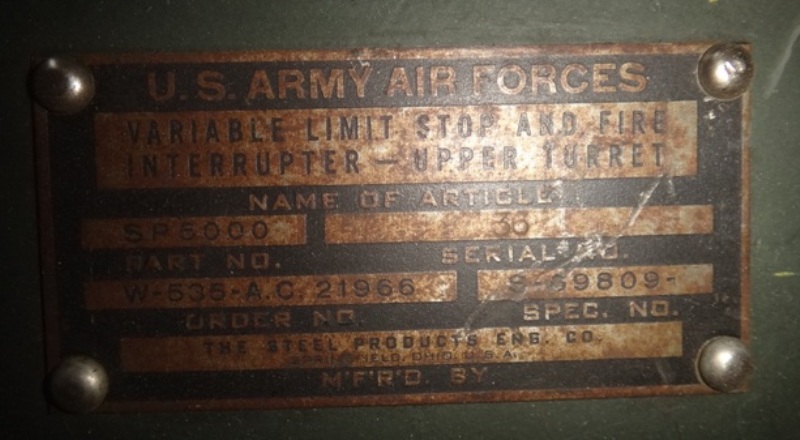
With the cover removed
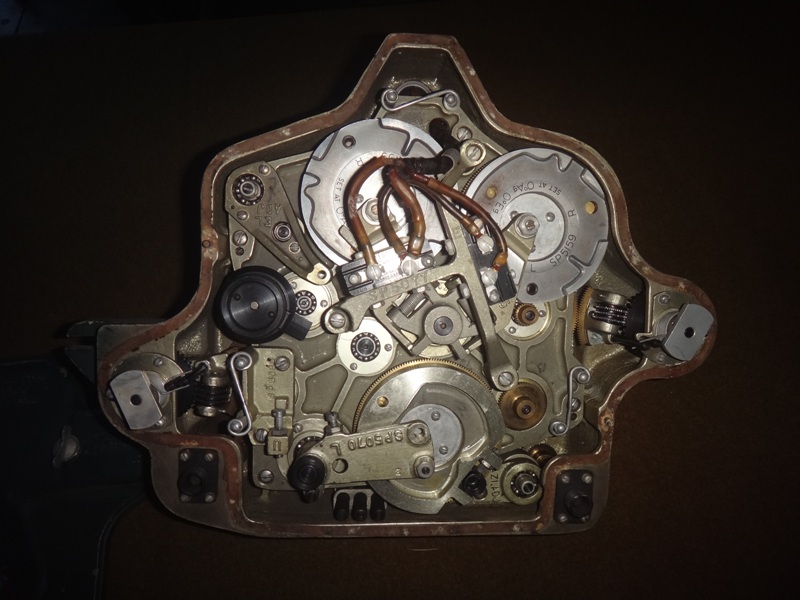
See, a work of art
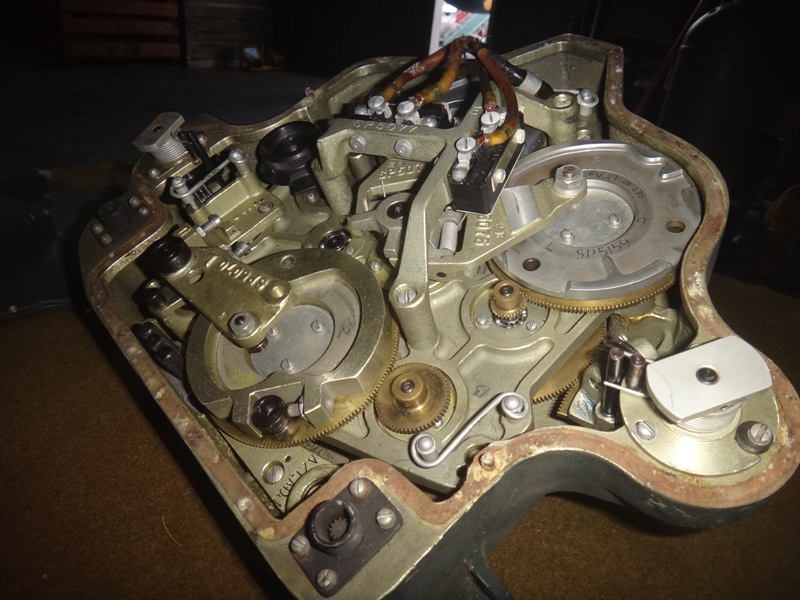
Can you pick out the profile interrupters with the machined profiles for the B-17 vertical stabilizer, wing tip and prop arcs?
Then you can see the black microswitches that when depressed cut out the firing circuit. Pretty cool huh? Well for us WWII techno geeks anyway...
This is pretty early war, even pre war technology that was used all through the war. You see the same principles used in many other WWII and post war fire control systems
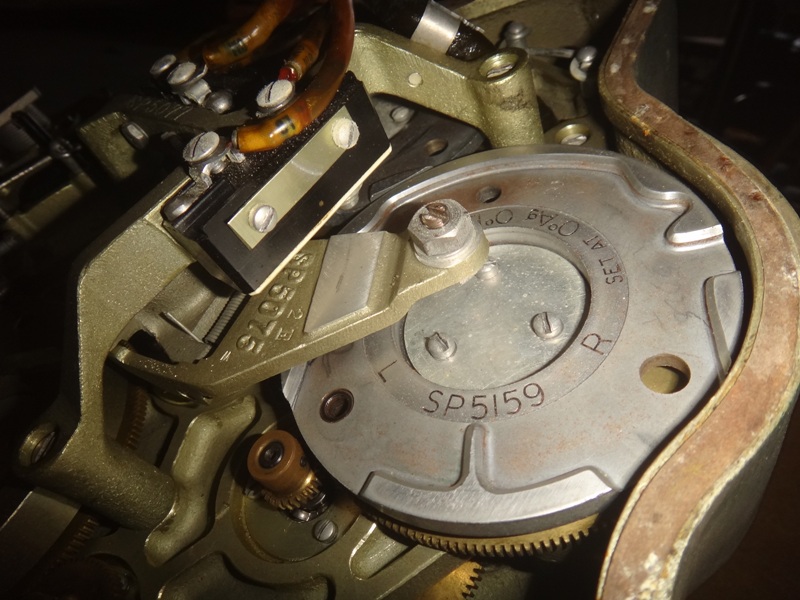
Here is an interrupter that I picked up for our Sperry A-1B B-17 upper turret. The turret came with one still in it that was missing the cover and it was full of crud. It actually cleaned up and after I installed it it ran great. The one pictured below looks to be new old stock and it in outstanding condition.
Full assy


With the cover removed

See, a work of art

Can you pick out the profile interrupters with the machined profiles for the B-17 vertical stabilizer, wing tip and prop arcs?
Then you can see the black microswitches that when depressed cut out the firing circuit. Pretty cool huh? Well for us WWII techno geeks anyway...
This is pretty early war, even pre war technology that was used all through the war. You see the same principles used in many other WWII and post war fire control systems

Re: B-17 question
Sat Nov 23, 2013 9:36 am
To me, analog technology is incredibly cool. Engineers had a problem that they had to solve mechanically...not digitally or with software, and their solution was purely elegant. A real throwback to a time where aviation design still required the work of a skilled artisan.
Re: B-17 question
Sat Nov 23, 2013 11:37 am
Great pictures of the Sperry system Taigh. I suspect most powered turrets had a similar design. The B25 Bendix upper turret uses a system of cams to cut out the firing circuit, here is a video showing them: http://www.youtube.com/watch?v=Cxjhi1vLa8E


Re: B-17 question
Sun Nov 24, 2013 3:25 am
So I take it the deflectors aft of the turret on the B-25J were just a backup in case the computer failed?
SN
SN
Re: B-17 question
Sun Nov 24, 2013 8:18 am
On the same subject - what about the 2 waist guns - they seem to be free-swiveling?
I can see wings and engines getting in the line-of-fire very easily and I can't see it being left to a very excited gunner to ease up on the trigger to avoid self-inflicted damage.
I can see wings and engines getting in the line-of-fire very easily and I can't see it being left to a very excited gunner to ease up on the trigger to avoid self-inflicted damage.
Re: B-17 question
Sun Nov 24, 2013 3:38 pm
I do not know of any restrictions in the waist window guns on the B-17 and the B-24. At least I have not come across anything in the technical information or from the mounts I have seen. It seems like they could actually hit their own tails or wings if they were not careful.
Anyone have any examples of waist window cam or physical limit plates used in the B-17 or B-24 or other aircraft?
I have seen a cam plate in a ball socket mount that looks like it was intended to restrict the travel. The ball mounts were mostly used in the forward positions in the nose where I believe this restriction was to prevent the gun from hitting the bomb sight of a B-25 or possibly the B-26.
I think the principal method for this was training. I don't recall reading or hearing about too many examples of gunners hitting their own aircraft.
As for the B-25 Bendix upper turret and the bullet deflectors mounted just aft of the guns I heard (but have not personally seen it in print) that they came up with the deflectors to prevent the to turret guns from hitting the tail gunner.
Even if there is an electrical fire interrupter the guns can cook off rounds if the firing chamber gets too hot from sustained fire. As I understand it North American made the deflector out of stout steel plate and made an aluminum fairing over the top of it for aerodynamics. The story goes on that they had problems in the field where the bullet would hit the deflector and then the fairing could redirect the bullet back toward the tail gunners head. Supposedly there was a Technical Order that came out requiring the removal of the aluminum deflector to prevent further problems.
It is my speculation from this story and others that there became a requirement later in the war that if a crew member was exposed to the field of fire that the guns should be physically raised so the gun would never be able to point at a crew member. The idea was to not rely solely on the electrical fire interrupter to prevent this kind of accident. This shows up in the B-29 turret system where the 4 gun turret had a cam plate mounted on the aft end and a bar/roller assembly mounted just below the guns so when the turret turned to the rear the guns were forced to raise to point over the heads of the CFC and the tail gunner.
The 2 gun turrets also had a rod/cam assembly that would do the same thing.
I have often wondered if the vertical bar in the PBY was to keep the gunner from hitting the tail or was if simply a hand hold when getting in and out of the blister.
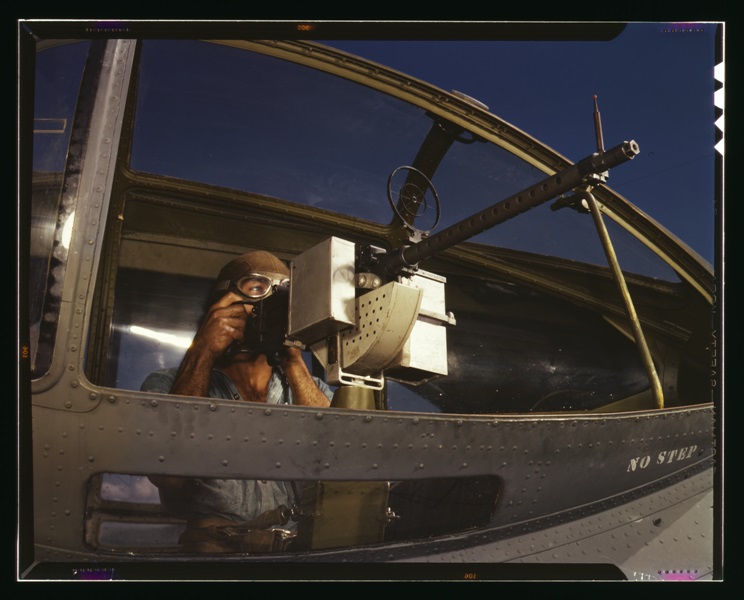
I seem to recall finding other examples in Navy aircraft of tubing type limits in some aircraft but no specifics come to mind.
The SBD and SB2C are good examples of flexible twin 30's that had no limits and could shoot their own structures. The SNJ/AT-6 flex gun also had no limits that I am aware of and a student could shoot their own tail and wing. Of course they had a lot of training by the time they went solo in the back of an AT-6 to shoot at target sleeves but you know it must have happened.
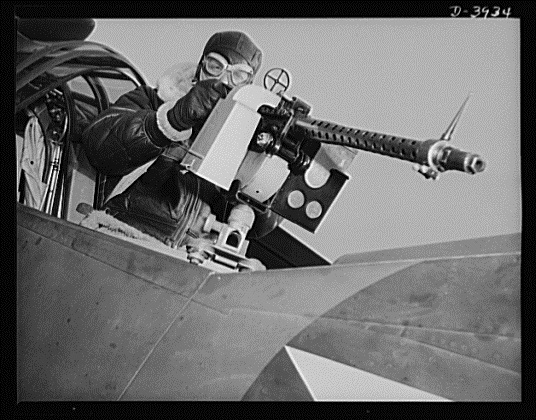
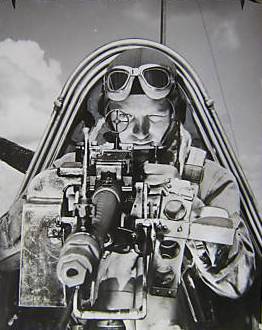
Anyone have any examples of waist window cam or physical limit plates used in the B-17 or B-24 or other aircraft?
I have seen a cam plate in a ball socket mount that looks like it was intended to restrict the travel. The ball mounts were mostly used in the forward positions in the nose where I believe this restriction was to prevent the gun from hitting the bomb sight of a B-25 or possibly the B-26.
I think the principal method for this was training. I don't recall reading or hearing about too many examples of gunners hitting their own aircraft.
As for the B-25 Bendix upper turret and the bullet deflectors mounted just aft of the guns I heard (but have not personally seen it in print) that they came up with the deflectors to prevent the to turret guns from hitting the tail gunner.
Even if there is an electrical fire interrupter the guns can cook off rounds if the firing chamber gets too hot from sustained fire. As I understand it North American made the deflector out of stout steel plate and made an aluminum fairing over the top of it for aerodynamics. The story goes on that they had problems in the field where the bullet would hit the deflector and then the fairing could redirect the bullet back toward the tail gunners head. Supposedly there was a Technical Order that came out requiring the removal of the aluminum deflector to prevent further problems.
It is my speculation from this story and others that there became a requirement later in the war that if a crew member was exposed to the field of fire that the guns should be physically raised so the gun would never be able to point at a crew member. The idea was to not rely solely on the electrical fire interrupter to prevent this kind of accident. This shows up in the B-29 turret system where the 4 gun turret had a cam plate mounted on the aft end and a bar/roller assembly mounted just below the guns so when the turret turned to the rear the guns were forced to raise to point over the heads of the CFC and the tail gunner.
The 2 gun turrets also had a rod/cam assembly that would do the same thing.
I have often wondered if the vertical bar in the PBY was to keep the gunner from hitting the tail or was if simply a hand hold when getting in and out of the blister.

I seem to recall finding other examples in Navy aircraft of tubing type limits in some aircraft but no specifics come to mind.
The SBD and SB2C are good examples of flexible twin 30's that had no limits and could shoot their own structures. The SNJ/AT-6 flex gun also had no limits that I am aware of and a student could shoot their own tail and wing. Of course they had a lot of training by the time they went solo in the back of an AT-6 to shoot at target sleeves but you know it must have happened.


Last edited by Taigh Ramey on Sun Oct 14, 2018 9:57 pm, edited 1 time in total.
Re: B-17 question
Sun Nov 24, 2013 6:06 pm
We had a member of the CAFs B-29 squadron shoot himself down during the Korean War. A .50 round cooked off and went through an oil cooler so they made an emergency landing at a forward air field in Korea.
Re: B-17 question
Sun Nov 24, 2013 6:16 pm
My dad was a radioman/gunner in PBY's in VPB-2, Jax late in the war and did gunnery training in war-weary beater Liberators. He told me that particular model had an "interrupter" on the top turret but "sometimes the cam got worn down, especially in the old tubs we flew in," and sometimes the turret traversed undisturbed,firing away.
One old Lib had so many patches on the tail that the pilots joked about one more round in the tail would alter the CG of the airplane.
Dad's war stories sounded more like the comedy war movies from the '60's.
One old Lib had so many patches on the tail that the pilots joked about one more round in the tail would alter the CG of the airplane.
Dad's war stories sounded more like the comedy war movies from the '60's.